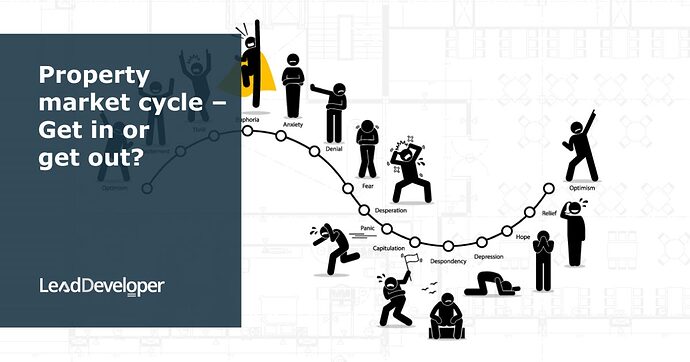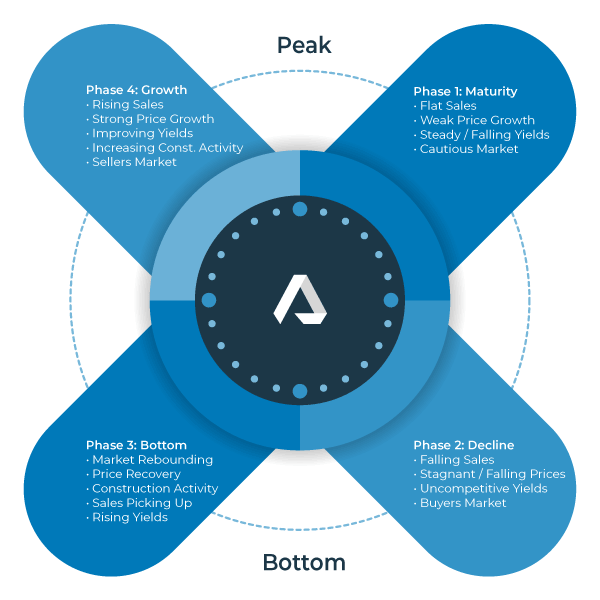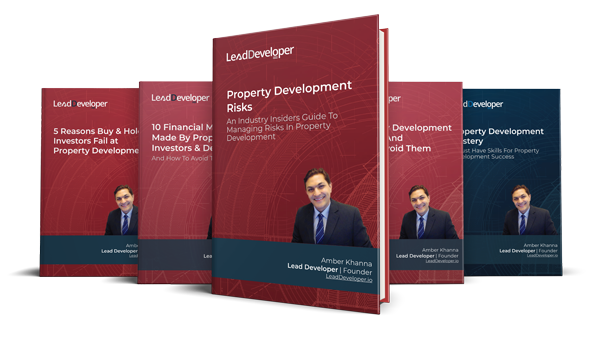Understanding The Property Clock : Timing The Property Market
Part of getting into property development is to understand the Property Market Cycle and Property Clock
Getting started in property development requires a lot of things, and understanding Property Clock is an important concept that every property developer must grasp.
To make informed decisions as a property developer, at the very least you need to be able to recognize when is the right time to invest in property, and when you should be more conservative or hold back.
By gaining an understanding of what we term the ‘Property Clock’ or property market cycle, you will be well primed to consider the wider picture with regard to investment.
It will help you to recognize when is the right time to invest in property to ensure optimal success.
A Property Development Course will provide a thorough explanation and demonstrate in more detail how you can pick up on market indicators to get a good idea of where in the property market cycle we are.
Meanwhile, to get you started, I have provided an explanation of what we term the Property Clock.
Develop And Hold, Or Develop And Sell?
I call it the Property Clock because I compare the property market with a sphere, forever turning and evolving.
The skill you need is to be able to recognize what stage it is currently at so you are best placed to predict when it will move on and what action you should take.
Certain indicators will give you an idea of where the market is headed next; if you are able to identify these, you will be able to adapt to changing market conditions and have the confidence to make astute decisions as to whether to increase your debt in the interest of further development, hold on to your current assets, or sell to reduce your debt, making a profit even after tax.
You are missing out if you haven’t yet subscribed to our YouTube channel.
The Development Market Cycle
Picture a clock; at the top is 12 noon and that represents the peak of the development market cycle. At the bottom of the clock, 6 serves as the very bottom of the market cycle.
Now you can slot the four phases of the Property Clock into their appropriate places. We call these four phases in the development cycle Maturity, Decline, Bottom, and Growth.
There are certain indicators within each phase that help us to recognize a particular stage.
Property Clock: Infographic
Property Clock: Maturity
A mature market is a cautious market; if the market is in maturity, property sales will be flat, there will be weak price growth, steady or falling yields, buyers run out of steam, property takes longer to sell, and building activity slows right down.
I recommend that now is the time to consider selling Non-Performing Assets, particularly those with a lot of debt – so when the clock turns and the market hits the bottom, you will be able to survive financially.
Property Clock: Decline
A decline is marked by a fall in property sales and uncompetitive yields, resulting in projects being abandoned.
Builders and developers are reluctant to take new projects on and existing projects, that were adopted during Maturity, are abandoned.
This is a time to exercise caution; an informed decision as to mitigation of risk is required well before you sign on the dotted line and become embroiled in a property development deal.
Since the market is on its way down, there will be a spike in mortgagee auctions; auction clearance rates are usually less than 50%. This is when you must manage your debt and avoid panic selling.
Property Clock: Bottom
At this stage, unable to fall any more, the market starts to pick up again and prices begin to recover. Property becomes more affordable.
I advise that now is the time to borrow more and invest in areas primed for capital growth.
You can find out more about recognizing capital growth areas by enrolling on a Property Development Course, which will also provide you with valuable guidance from the experts.
Property Clock: Growth
Rising sales, such as those we are seeing in Melbourne and Sydney, indicate that the property market is once again growing.
Strong demand means an increase in building activity and rapid price growth, and it becomes a vendor’s market.
As with Melbourne and Sydney, the Auction Clearance Rate is greater than 70%; it has recently reached 89% in Sydney and around 86% in Melbourne. This is the time for property developers to be aggressive.
What Does The Property Clock Say? Is It The Right Time?
It is extremely difficult, or impossible, to predict when the market is at its lowest, when it is recovering, and when it is at its peak – unless of course we have the benefit of looking at two points on a graph retrospectively!
The right time for investors to buy is when the market is starting to pick up, but by the time you recognize that it could be too late.
For developers, there is no right time to buy, or, in other words, if you are able to mitigate the risk and make enough pre-sales, then the time is right – if a deal stacks up, it stacks up!
A Property Development Course will help developers plan ahead effectively, with guidance and considerations on buying for less than market value or a price that enables you to work with the property.
Industry Insiders’ Secrets To Managing Risks & Avoiding Mistakes & Pitfalls In Property Development
Get the Risks & Mistakes Bundle Now
Includes 5 x detailed eBooks [120 pages]
✓ Risks In Property Development - Industry Insiders Guide (26 Pages)
✓ 10 Big (Financial) Property Investing Mistakes Made By Investors (58 Pages)
✓ 7 Property Development Mistakes And How To Avoid Them (8 Pages)
✓ 5 Reasons Buy-and-hold Investors Fail At Property Development (12 Pages)
✓ Property Mastermind: 8 Skills Needed For Property Development Success (16 Pages)
Property Clock: Market Indicators
During a recession, supply and demand are in decline; in periods of recovery, supply is minor and demand begins to increase.
During a property boom, or the expansion phase, supply begins to increase and demand becomes greater than supply.
Then, during contraction, supply is greater than demand and demand begins to slow down.
Investment Cycle
When the market slows down, there is an oversupply of stock, construction prices fall, there is an abundance of tradespeople, and valuations fall.
There are more sellers than buyers, and confidence in the market falls.
At this lowest point, it is a buyer’s market. As the market starts to recover, we see rentals increase, stock levels tightening, and prices rise.
Then, during a property boom, valuations rise and it becomes a seller’s market.
Why Do Property Prices Stay Flat?
Property prices can go up, down, or remain the same. Property prices remain flat because of uncertainty surrounding the current trend, but they will rise again because of inflation.
As demonstrated by the Property Clock, the property market moves between cycles of Growth and Decline; it takes time for a new trend to emerge. During this period, prices generally stay flat.
Although it is difficult to pinpoint where we are in the development market cycle at a given time, certain indicators enable us to make an educated guess.
Find out more about Property Development Courses and gain more valuable insights to enable you to become a successful property developer.
FAQs
What is a property Clock?
The property clock is an essential but widely used tool that shows where competitive markets are in the real estate cycle.
The property cycle comprises four stages: recovery, upswing, recession, and stagnation.
How does the property cycle work?
The supply (number of properties on the market) and demand (number of persons wanting / able to get a mortgage) are the two primary factors of the property cycle.
Property prices will rise if prices increase. As our population rises, so does the need for rental and owning properties.




